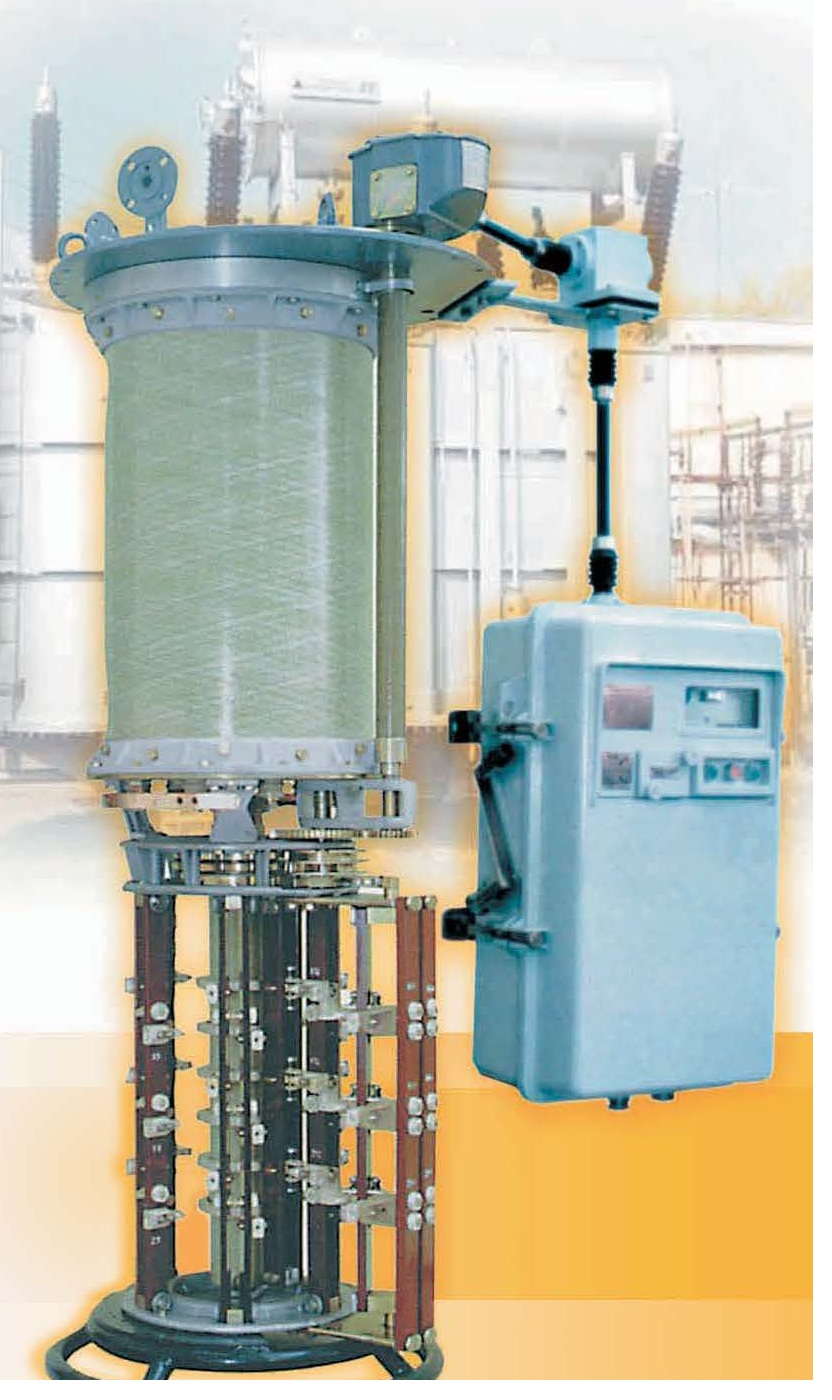
The RS 9/9.3 switching device is designed for voltage regulation in power transformers under load. Due to their high reliability, switching devices of this series can be used in furnace transformers, electrolysis transformers, etc. The RS 5 switching device kit with motor drive MZ-4.1.4 and MZ-4.4 meets the requirements of IEC 60214 1-2003.
Execution options can be for work in countries with temperate, tropical or cold climates, as well as execution according to customer requirements.
1. Basic technical data of switching devices of the RS 9 / 9.3 series
Table 1 - Basic technical data

Notes: (1) RS9 switch units with oval flange. Switching devices RS9.3 with round flange. All other technical data are the same for them.
(2) 700A with special version.
(3) Minimum volume of preservative due to thermal expansion of the oil when the temperature changes from -30°C to +100°C: ΔV=0.1V*+5 (dm3)
The RS9 switching device can operate with rated load at
oil temperatures from -25°C to +115°C.
1.2. Rated load current (Iu), rated step voltages (Ui), rated switching capacity (PstN).
Table 2 shows the maximum values of Iu and the corresponding step voltages Ui and the rated switching capacity PstN
Table 2 – Rated load current (Iu), rated step voltages (Ui), rated switching capacity (PstN)

The rated switching load current Iu and the corresponding rated step voltage Ui are determined by the rated switching capacity curve (diagram 1a, 1b)

Scheme 1a – Rated switching capacities (rated load current Iu[A]; rated step voltages Ui[V])

Scheme 1b – Rated switching capacities (rated load current Iu[A]; rated step voltages Ui[V]).
When the transformer is overexcited, the maximum step voltage can be increased by 10%, provided that the switching capacity is limited to its rated value. The maximum switching capacity Pstmax is the maximum power at which the switching device can safely switch the control winding from one adjacent stage to another.
According to IEC 60214-1:2003 m 5.2.2.2. The maximum switching capacity is confirmed at twice the maximum rated current and the corresponding step voltage and is equal to the rated switching capacity multiplied by 2, i.e.
Pstmax = 2Ium.Ui = 2PstN
Specific switching modes are explained in the general catalog of switching devices produced by HHIB.
1.3 Electrical and mechanical endurance.
The electrical endurance of arcing contacts in a contactor depends on many factors related to operating conditions. Table 3 shows the weighted average values of the number of switchings before revision and before changing contacts, obtained experimentally with real loads on arcing contacts at the maximum rated load current, Ium[A] rated step voltage Ui[V] and cosφ=1.
Table 3 - Electrical and mechanical endurance

(1) Once every 5 years for 200A, 3 years for 400A and 2 years for 630A,800A,1200A and 1600A. Detailed data on the number of switching operations before inspection for various switching devices are given in the 'Installation and operating instructions RS9/RS9.3'.
1.4 Insulation level
The insulation level of the switching device is determined by a number of withstand voltages. The rated withstand voltages to earth are shown in Table 1. These voltages are defined by national and international standards. The internal insulation is measured depending on the voltages that are obtained at the deflections of the transformer winding to various parts of the selector, pre-selector and contactor.
Diagram 3 shows basic wiring diagrams and typical insulation distances for them.
Withstand voltages at various insulation distances are indicated in Table 4. To correctly select a switching device, these voltages must be consistent with the voltages that appear during the lightning voltage pulse test and the inductive voltage test applied to the transformer. The most unfavorable operating position of the switching device must be taken into account. The insulation to ground and the selector insulation row are not related to each other and can be selected according to specific requirements.
